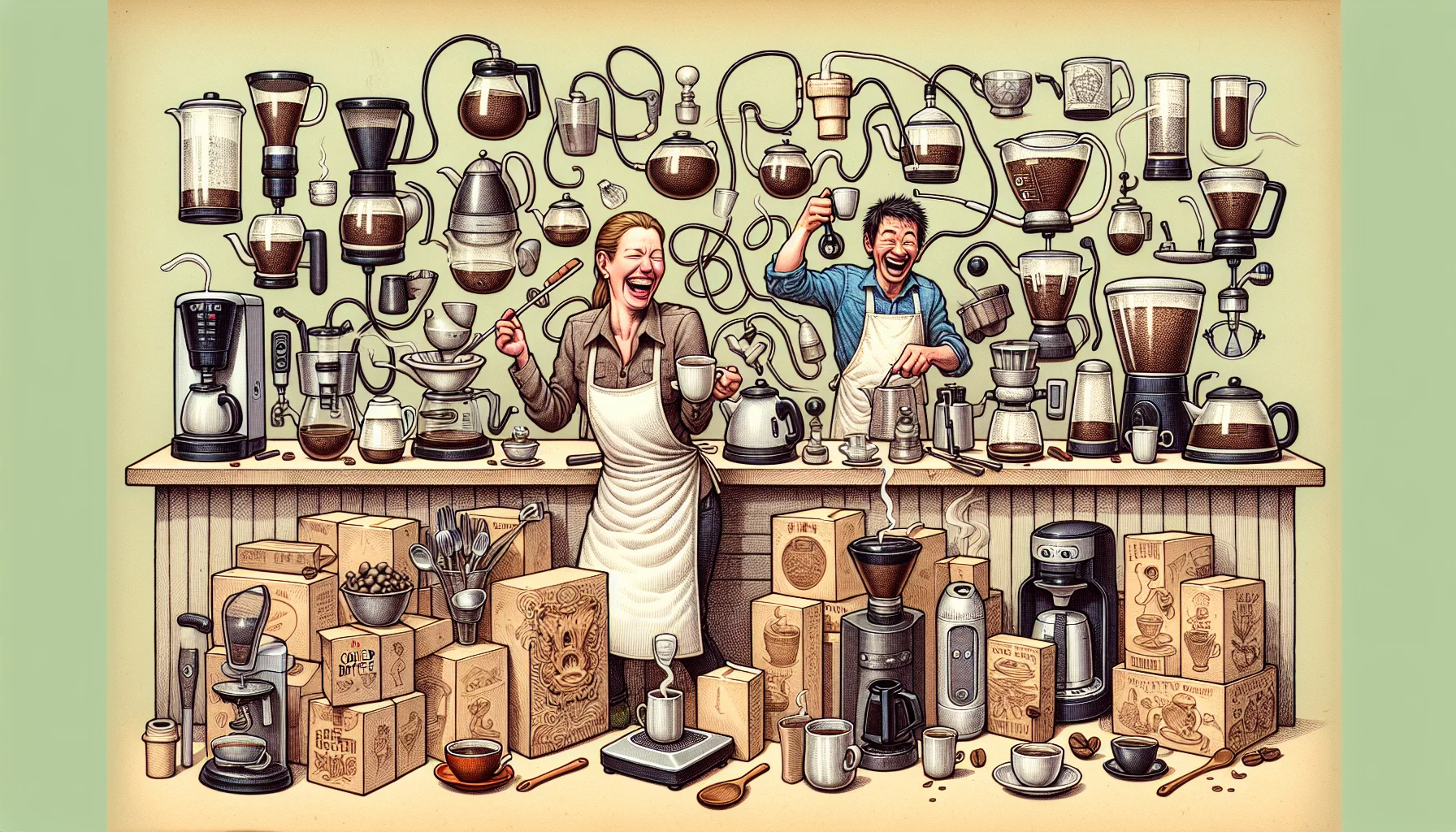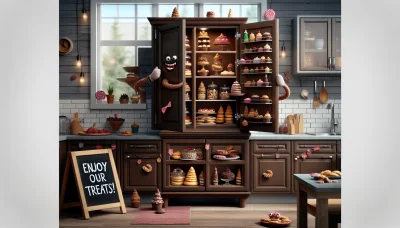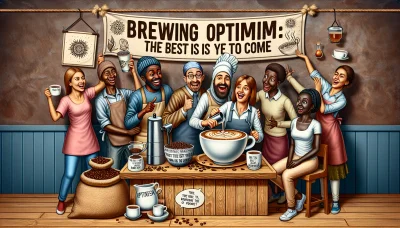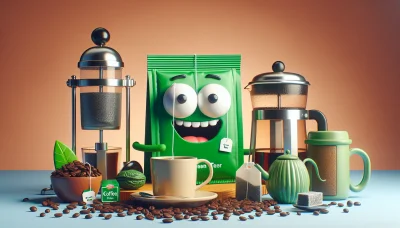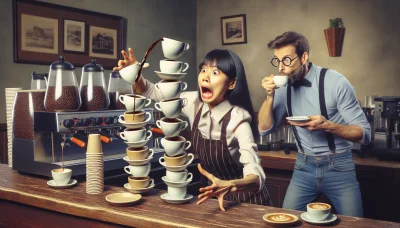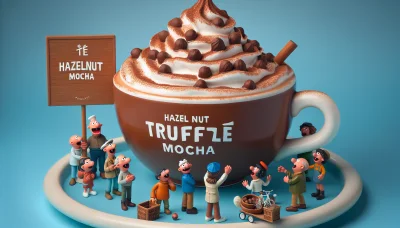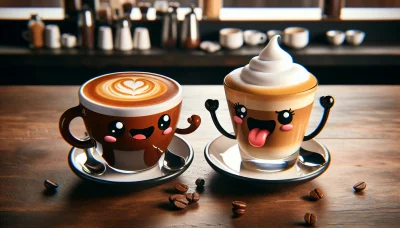Brewing Habits for a Million Possibilities Quiz
Test Your Knowledge
Question of
Brewing Habits for a Million Possibilities
Exploring the world of tea and coffee brewing opens up a realm of endless possibilities. Each method and product offers a unique twist to your daily ritual, whether you're a connoisseur of the classic espresso, a lover of the delicate flavors of green tea, or someone curious about the latest brewing gadgets. From the traditional drip to the modern cold brew, and from the ancient tea ceremony to the innovative tea infuser bottles, there's always something new to discover. Dive into the art and science of brewing, and let's explore how each cup can bring a moment of joy and a taste of the infinite variations that tea and coffee can offer.
Understanding the Basics of Brewing
The art of brewing encompasses both science and tradition, whether it's for crafting a perfect cup of tea or coffee. The basic principle behind brewing these beverages is the extraction of flavors and compounds from the tea leaves or coffee grounds using water as a solvent. The temperature of the water, the brewing time, and the ratio of water to tea or coffee significantly influence the quality and taste of the final drink. For tea, water just off the boil is ideal for most types, but cooler water temperatures are recommended for delicate teas like green or white to prevent bitterness. Coffee brewing, on the other hand, requires water at a slightly lower temperature, typically between 195°F to 205°F, to ensure optimal extraction without over-extraction, which can lead to bitterness. The grind size of coffee beans is also crucial; a finer grind is suitable for quick extraction methods like espresso, while coarser grinds are perfect for slower methods like French press or cold brew. Both tea and coffee aficionados often experiment with these variables to achieve their preferred balance of flavors, making brewing both a science and a personal journey.
The Art of Tea Brewing
- Start with fresh, cold water and bring it to a boil. For green and white teas, let the water cool slightly before brewing.
- Select your tea. Whether it's loose leaf or a tea bag, quality matters for the perfect cup.
- Preheat your teapot or cup to maintain the temperature of the tea while it brews. Simply fill it with hot water, then discard the water.
- Measure your tea. A general guideline is 1 teaspoon of loose leaf tea per 8 ounces of water, but this can vary depending on the type of tea and personal preference.
- Place the tea in your teapot or cup and pour in the hot water. Be sure to follow the recommended water temperature for your specific type of tea.
- Steep the tea for the recommended amount of time. This varies by type of tea, but generally ranges from 1 to 5 minutes. Avoid over-steeping to prevent bitterness.
- Remove the tea leaves or bag from the water after the recommended steeping time.
- If desired, add sweeteners or milk to taste. Note that some teas are best enjoyed without any additions to appreciate their full flavor.
- Enjoy your perfectly brewed cup of tea!
The Science of Coffee Brewing
- Start with fresh, whole bean coffee and grind it to the right coarseness for your brewing method.
- Use clean, filtered water heated to between 195°F and 205°F for optimal extraction.
- Measure the coffee and water accurately. A good starting point is a ratio of 1:16 coffee to water.
- Pre-wet your coffee grounds to allow for a more even extraction.
- Brew time will vary depending on the method, but aim for 2 to 4 minutes for most methods.
- Stir or agitate the coffee grounds during brewing to ensure all grounds are evenly extracted.
- After brewing, serve the coffee immediately for best flavor or store it in a thermal carafe to keep it hot without burning.
Exploring Different Brewing Techniques
| Brewing Technique | Type (Tea/Coffee) | Equipment Needed | Time Required | Flavor Profile |
|---|---|---|---|---|
| Pour Over | Coffee | Pour over cone, Paper filter, Kettle | 2-4 minutes | Clean and complex |
| French Press | Both | French press | 4-5 minutes | Rich and full-bodied |
| AeroPress | Coffee | AeroPress, Paper filter | 1-2 minutes | Smooth and strong |
| Cold Brew | Both | Container, Strainer | 12-24 hours | Mild and sweet |
| Matcha Whisking | Tea | Bamboo whisk, Bowl | 2-3 minutes | Rich and frothy |
| Espresso | Coffee | Espresso machine | 20-30 seconds | Strong and concentrated |
| Steeping | Tea | Teapot or cup, Strainer | 3-5 minutes | Varies with tea type |
Choosing the Right Equipment for Brewing
When it comes to brewing the perfect cup of tea or coffee, the importance of selecting the right equipment cannot be overstated. The choice of brewing equipment plays a critical role in extracting the full flavor and aroma from your tea leaves or coffee beans. Whether it's a French press, an espresso machine, a pour-over coffee maker, or a traditional teapot, each piece of equipment offers a unique method of brewing that can significantly affect the taste and quality of your beverage. Moreover, investing in high-quality brewing equipment can also enhance the overall brewing experience, making it more enjoyable and efficient. From grinders to kettles with precise temperature controls, selecting the right tools for your brewing needs is essential for achieving that perfect brew every time.
The Impact of Brewing Habits on Taste
Different brewing habits can significantly affect the taste of tea and coffee, making each cup a unique experience. The temperature of the water, the brewing time, and the quality of the tea leaves or coffee beans are crucial factors that influence the final taste. For instance, brewing coffee with water that is too hot can extract too much acidity, resulting in a bitter cup. Similarly, steeping tea for too long can lead to astringency, overshadowing the delicate flavors of the leaves. Furthermore, the grind size of coffee beans affects the extraction process, with finer grinds leading to a more intense flavor profile. The choice of brewing method, whether it be drip, espresso, French press, or cold brew for coffee, and steeping, boiling, or using a traditional tea ceremony for tea, also plays a significant role in shaping the taste. Each method can highlight different notes and textures, from the robust and rich flavors of espresso to the light and refreshing taste of cold-brewed tea. Understanding and experimenting with these variables allows enthusiasts to tailor their brewing habits to their taste preferences, making each cup of tea or coffee a personalized and enjoyable experience.
Conclusion: Embracing the Possibilities of Brewing
The journey into the realms of tea and coffee brewing is not just about crafting the perfect cup; it's a voyage of discovery, experimentation, and understanding. By delving into the myriad brewing habits, techniques, and the multitude of related products, enthusiasts can unlock a world of flavors, aromas, and experiences previously unimagined. Whether it's exploring the delicate nuances of single-origin coffees or the rich traditions of tea ceremonies, the key lies in embracing the possibilities. This exploration not only enhances our daily rituals but also connects us more deeply with the cultures and histories intertwined with these beloved beverages. Thus, the importance of understanding and experimenting with different brewing habits cannot be overstated—it is a journey that promises to enrich our lives in unexpected and delightful ways.
